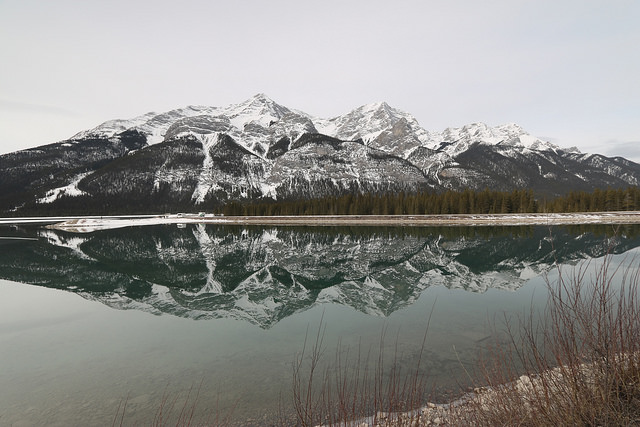Canada News
Federal budget looks ready to help protect more lands, inland waters, oceans

The federal government appears poised to commit what some believe could be a significant amount of cash in next week’s budget to protect more of Canada’s lands, inland waters and oceans. (Photo by Thank you for visiting my page/Flickr, CC BY 2.0)
OTTAWA — The federal government appears poised to commit what some believe could be a significant amount of cash in next week’s budget to protect more of Canada’s lands, inland waters and oceans.
Federal insiders say the government feels its climate-change financing has largely been dealt with, so Ottawa will likely shift its funding focus to other international obligations on the environment, including protected spaces.
Groups pushing Canada to fulfil its United Nations vow to safeguard more of its ecosystems by 2020 say signals from Ottawa suggest this will be the year the government announces a big investment.
It remains to seen how far the Liberal government will go to meet its targets under the UN Convention on Biological Diversity — but the clock is ticking.
The agreement, reached in 2010, says Canada must protect at least 17 per cent of its terrestrial areas, including inland waters, as well as at least 10 per cent of its oceans by 2020.
Today, Canada’s protected space covers nearly eight per cent of its marine ecosystems and just over 10 per cent of terrestrial areas.
To meet the UN goals, a coalition of 19 environmental and conservation organizations has called on the federal government to use the budget to invest $1.3 billion over the next three years. After that, the Green Budget Coalition wants Ottawa to commit another $450 million per year.
From their interactions with federal officials, members of the group say momentum has been building for months inside government.
“I would be very surprised if there wasn’t some money — and even a significant amount of money — for protected areas because that feels increasingly like the direction the government has been going,” said Eric Hebert-Daly, national executive director of the Canadian Parks and Wilderness Society.
“The drive to the 2020 targets is really taking shape in a way that we had been hoping for over the last number of years and the seriousness with which the government seems to be taking it is going well.”
If Canada hopes to meet the 2020 deadline, time is of the essence. Hebert-Daly said there’s little chance of meeting the goal unless Ottawa puts money on the table this year.
The push is only part of the growing pressure on Finance Minister Bill Morneau, who’s faced public demands from within his own party to help protect ecosystems in next Tuesday’s budget.
Last month, Liberal backbencher William Amos led a campaign that saw 116 MPs and senators from all major political parties sign a letter to Morneau. It urged him to invest at least $1.4 billion over the next three years to help the country meet its UN commitment on protected areas.
The issue of protected spaces has been an all-party concern in other instances as well.
Last March, a parliamentary committee report, which received unanimous support, made 36 recommendations on how the government could rapidly expand Canada’s protected spaces. The paper said there was a need for adequate funding to create and manage protected areas.
The Liberals vowed to follow through on the UN commitments during the 2015 election campaign and Environment Minister Catherine McKenna’s mandate letter has instructed her to work with the fisheries minister and the Canadian Coast Guard to protect 10 per cent of the country’s marine and coastal areas by 2020.
John Lounds, president and CEO of the Nature Conservancy of Canada, said the Trudeau government has been “very keen” on making sure Canada is living up to its international obligations.
“I’ve been encouraged by all the discussions I’ve been having and I think 2018 is the year,” said Lounds, who noted Canada boasts 20 per cent of the world’s freshwater and forests as well as up to 25 per cent of the planet’s wetlands.
“We’ve got an awful lot that we’re custodians of and it’s important that Canada step up and lead the way.”
Megan Leslie, president and CEO of the World Wildlife Fund Canada, agreed there’s a good chance funding for protected areas will find its way into next week’s budget. She said it’s critical that the effort focus on protecting high-quality areas, not just any space.
Leslie hopes the budget will also put more resources into protecting species at risk. A report last fall by her organization found 50 per cent of vertebrate species were in decline and that populations protected under the Species At Risk Act had seen their situations deteriorate even after being listed.
Enhancing the protection of endangered species is another component of McKenna’s mandate letter, as is developing the national parks system.
“There is a crisis when it comes to biodiversity — globally but also here in Canada,” said Leslie, a former New Democrat MP.
A senior government source said the government made commitments in last year’s budget to deal with climate change and green infrastructure. The next steps should focus on protected areas, species at risk and national parks, added the official, who wasn’t authorized to speak publicly and maintained ignorance about the actual contents of this year’s budget.
The official said the government will work with Indigenous communities, provinces and territories to accomplish some of these goals — however, funding is necessary to complete the process.
For the protected-areas targets, hitting them will be no small feat when you consider Canada’s expanse, the official said.





















